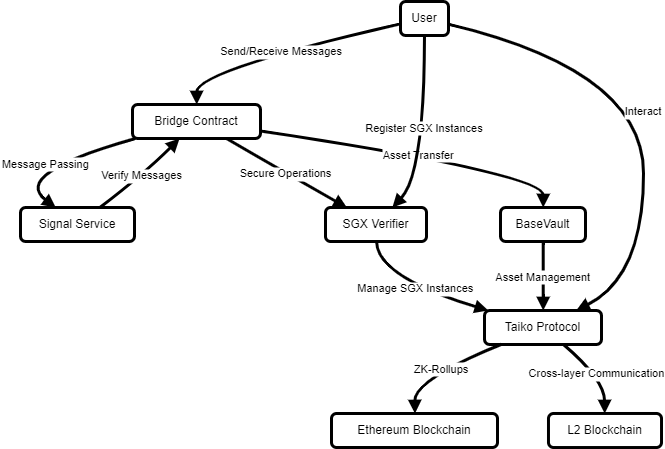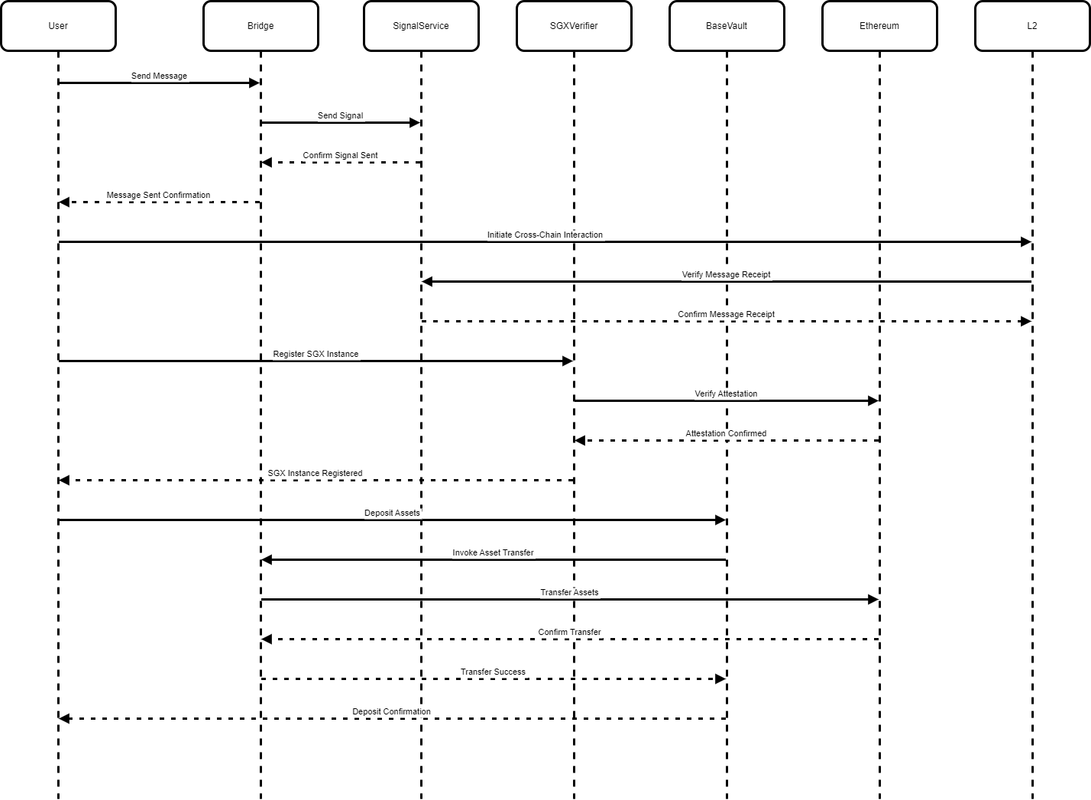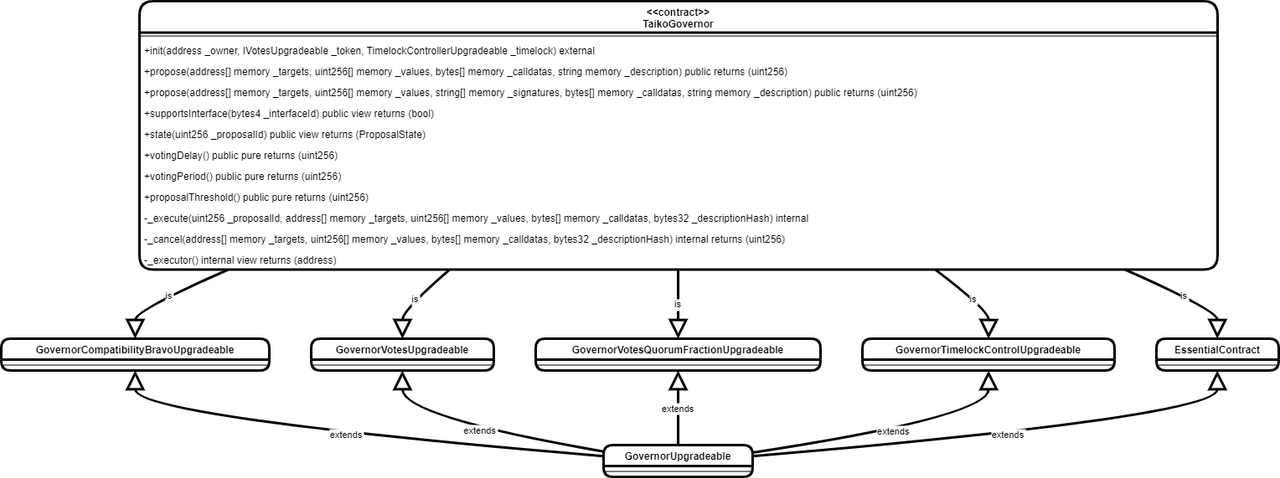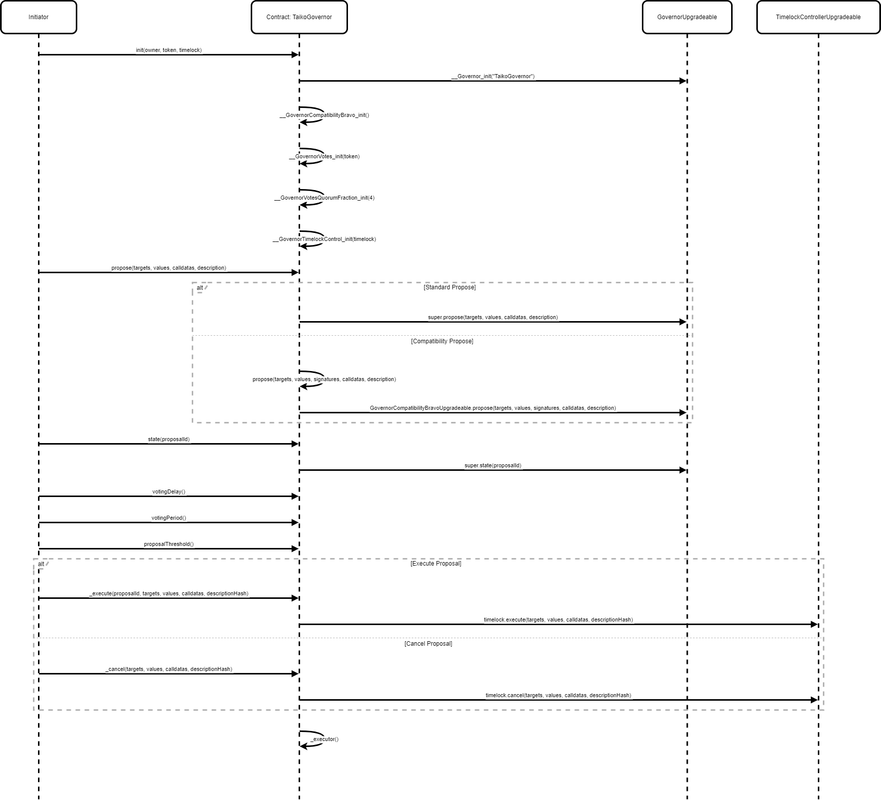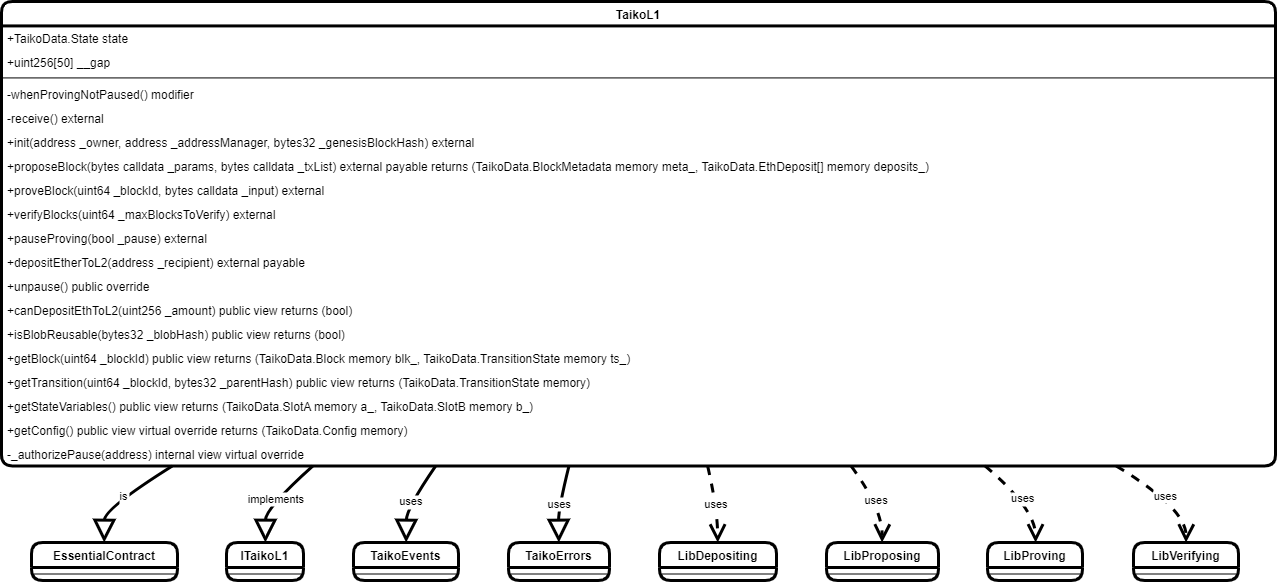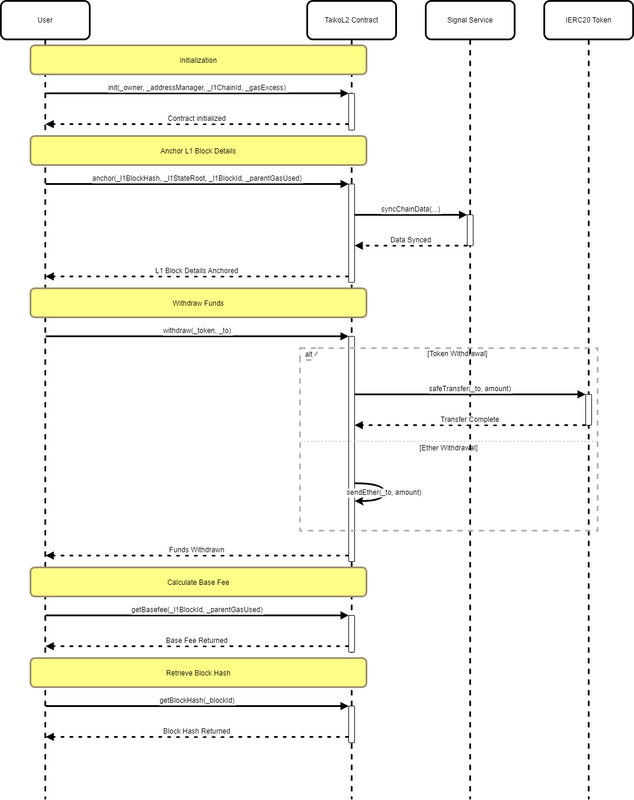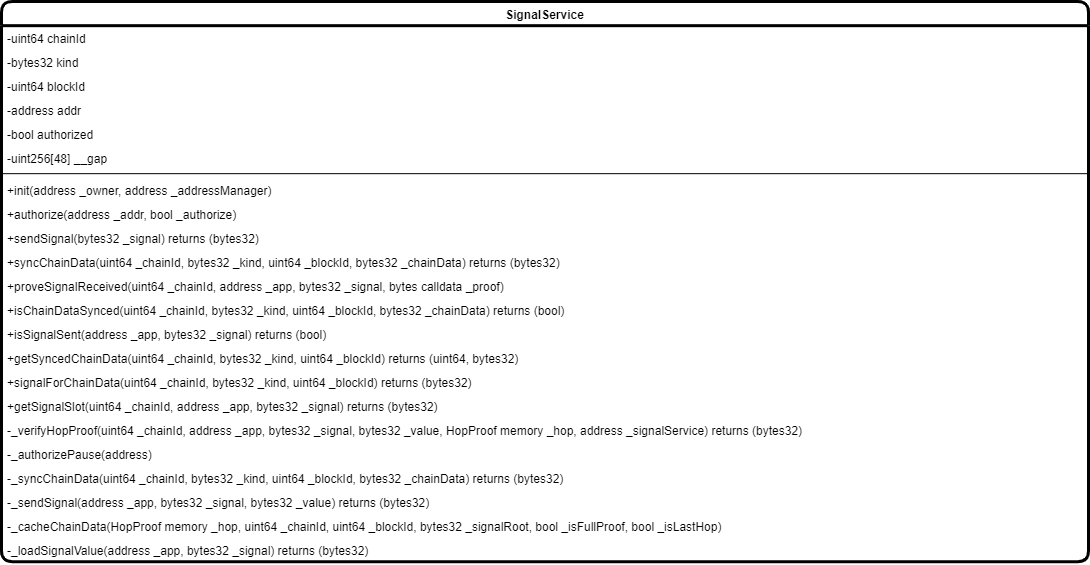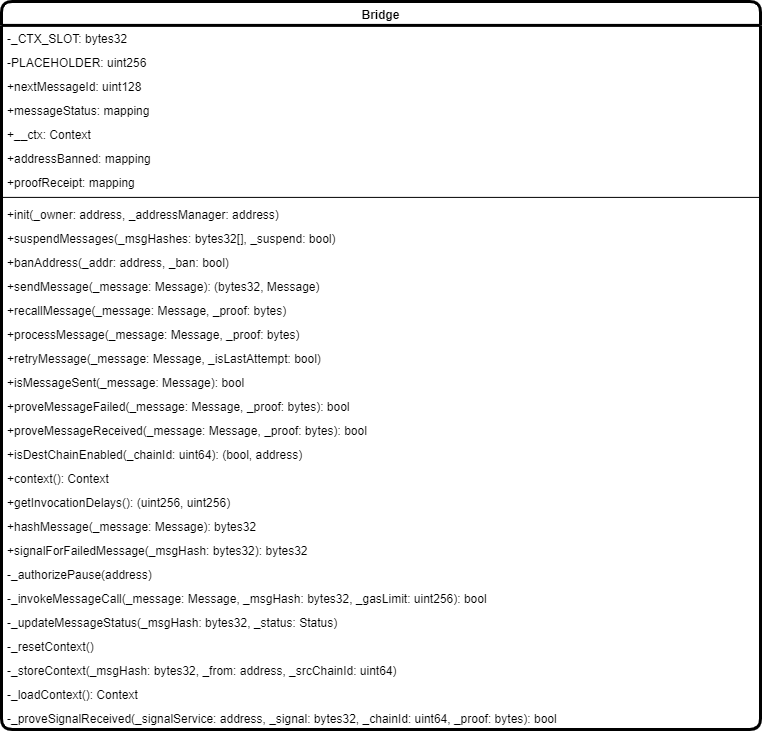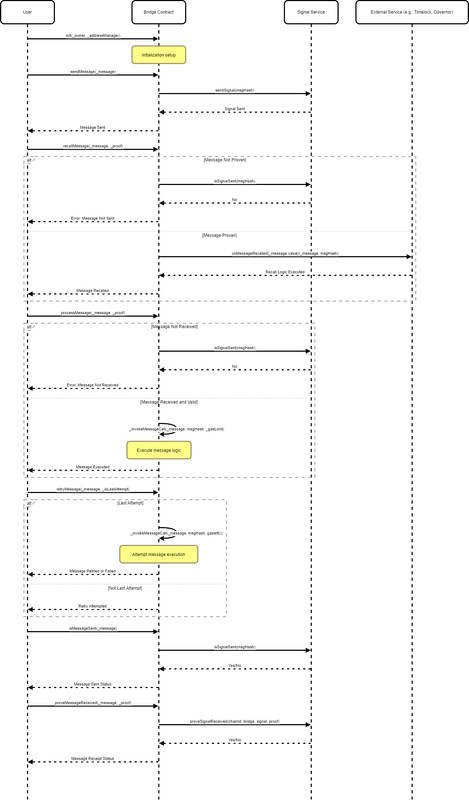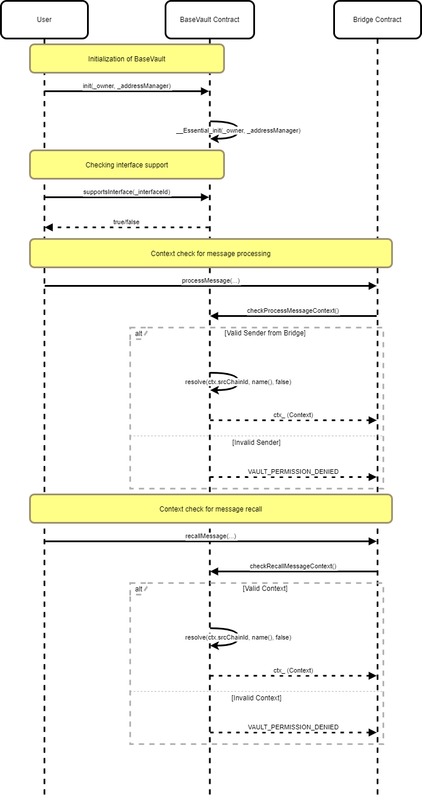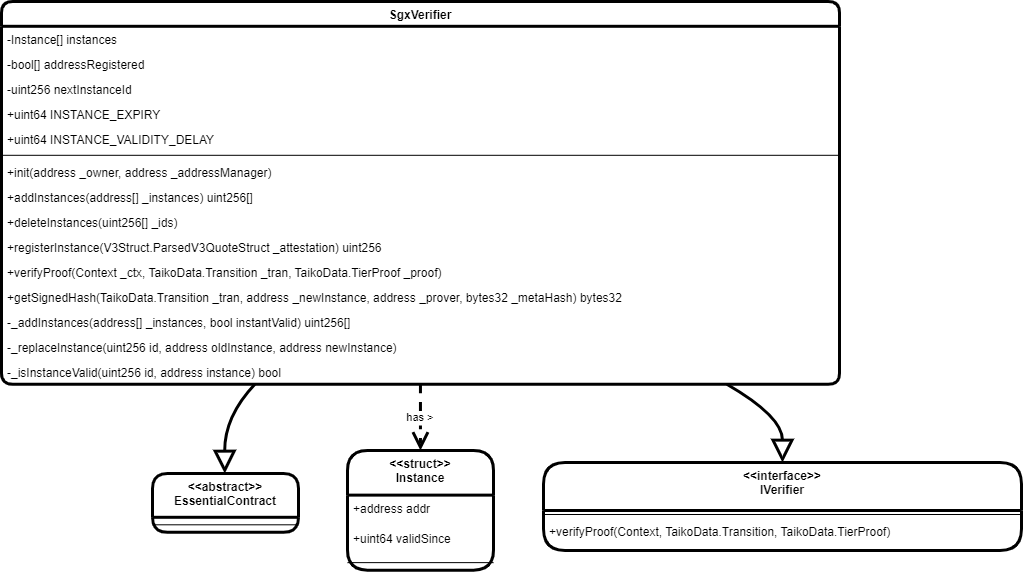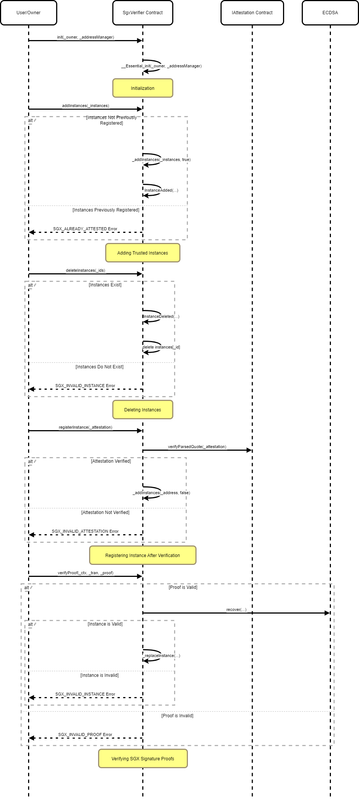Taiko - roguereggiant's results
A based rollup -- inspired, secured, and sequenced by Ethereum.
General Information
Platform: Code4rena
Start Date: 04/03/2024
Pot Size: $140,000 USDC
Total HM: 19
Participants: 69
Period: 21 days
Judge: 0xean
Total Solo HM: 4
Id: 343
League: ETH
Findings Distribution
Researcher Performance
Rank: 31/69
Findings: 1
Award: $423.58
🌟 Selected for report: 0
🚀 Solo Findings: 0
Findings Information
🌟 Selected for report: kaveyjoe
Also found by: 0xbrett8571, 0xepley, JCK, LinKenji, MrPotatoMagic, Myd, Sathish9098, aariiif, albahaca, cheatc0d3, clara, emerald7017, fouzantanveer, foxb868, hassanshakeel13, hunter_w3b, joaovwfreire, pavankv, popeye, roguereggiant, yongskiws
Awards
423.5827 USDC - $423.58
Labels
External Links
Taiko: Enhancing Ethereum's Scalability and Accessibility
Taiko is a technological innovation designed to address Ethereum's scalability and high transaction cost issues while preserving its core properties like censorship resistance, security, and permissionless access. It is an Ethereum-equivalent Zero-Knowledge Rollup (ZK-Rollup) that operates without centralized control, allowing community-driven, permissionless operations. The Taiko protocol encompasses a set of smart contracts deployed on Ethereum, representing a fully open-source approach to scaling the Ethereum network. It supports a decentralized, community-run model, distinguishing itself by leveraging Ethereum validators for transaction sequencing instead of a centralized sequencer, emphasizing its permissionless and decentralized ethos. With its structure, Taiko aims to make Ethereum more affordable and accessible without compromising the blockchain's fundamental principles.
| File Name | File Description |
|---|---|
| TaikoGovernor.sol | This code establishes a governance framework for the Taiko project, integrating features such as voting, quorum requirements, and proposal timeframes to facilitate decentralized decision-making. It leverages OpenZeppelin's upgradeable contracts for governance compatibility, voting mechanisms, quorum fraction adjustments, and timelock control, ensuring security and flexibility in the governance process. |
| TaikoData.sol | This code defines a library of data structures used in the Taiko protocol, including configurations for blockchain operations, proof requirements, and transaction processing, designed to enhance the protocol's functionality and efficiency. |
| TaikoL1.sol | This contract is the foundational layer of the Taiko protocol, enabling operations like block proposing, proving, and verifying, while managing Taiko tokens and Ether deposits without holding Ether directly. It supports deployment across different blockchain layers to facilitate the creation of layered blockchain architectures. |
| TaikoL2.sol | This smart contract, part of the Taiko Layer 2 (L2) framework, manages cross-layer message verification and implements EIP-1559 gas pricing mechanisms for Layer 2 operations, ensuring efficient communication and transaction processing between layers. |
| SignalService.sol | This contract facilitates secure cross-chain communication by verifying messages across different blockchain layers, leveraging specific signals and data syncing methods to maintain coherence and security in cross-chain interactions. |
| Bridge.sol | This contract serves as a bridge for sending, receiving, and processing cross-chain messages, facilitating secure and efficient communication between blockchain networks while managing message status and ensuring proper authorization for actions. |
| BaseVault.sol | This contract serves as a foundational component for creating vaults, incorporating cross-chain messaging capabilities and ensuring interactions are authorized and managed securely within the ecosystem. It supports interface checks and provides essential initialization and permission validation functionalities. |
| SgxVerifier.sol | This contract implements on-chain verification for SGX signature proofs, facilitating the registration and management of SGX instances to ensure secure and authenticated communication within a specified network infrastructure. It supports instance attestation, verification, and manages the lifecycle of SGX instances, including their validity and replacement. |
Architecture System Overview
The system comprises multiple smart contracts interacting across layers (L1 and L2), focusing on cross-chain communication, SGX instance management for secure operations, vaults for asset management, and bridging functionality for seamless asset transfer and message passing between chains.
- Taiko Protocol: Core of the system designed to extend Ethereum's functionalities, reducing transaction costs while maintaining decentralization and security. It incorporates ZK-Rollups for scalability.
- Bridge Contract: Facilitates cross-chain communication, handling message sending, processing, and recall functionalities. It interacts with the Signal Service for message verification and ensures secure and efficient cross-chain transfers.
- SGX Verifier: Manages SGX instances, ensuring secure operations through on-chain verification of SGX signature proofs. It enables the registration of new SGX instances and the replacement of old ones.
- BaseVault: Serves as a foundational component for creating secure vaults, integrating with the bridge for message recall and invocation, ensuring that only authorized interactions occur.
- Signal Service: Works closely with the Bridge Contract for verifying cross-chain messages. It maintains records of message statuses and supports secure message passing between chains.
Architecture Diagram
This diagram illustrates the core components of the system and their interactions. The Taiko Protocol acts as the heart of the ecosystem, extending Ethereum functionalities and ensuring scalability and security through ZK-Rollups. The Bridge facilitates secure message and asset transfer across blockchain layers, closely integrated with the Signal Service for message verification. The SGX Verifier ensures the security of operations with SGX technology, while the BaseVault provides a foundation for creating secure vaults for asset management. Users interact with the system, leveraging these components for efficient and secure blockchain operations.
Sequence Diagram: System Interaction Overview
Here's an overview of how various components of the system interact with each other through a sequence of operations, from a user sending a cross-chain message to the verification of SGX instances and handling assets within vaults.
This diagram illustrates the sequence of interactions within the system:
- User Sends a Message: A user initiates a cross-chain message through the Bridge, which sends a signal to the Signal Service for verification.
- Cross-chain Communication: For operations involving L2, messages are verified by the Signal Service to confirm receipt, facilitating secure cross-chain interactions.
- Secure Operation with SGX: Users can register SGX instances with the SGX Verifier for secure operations, which are validated by Ethereum for added security.
- Asset Management in Vault: Users can manage assets by depositing them into vaults, where the BaseVault communicates with the Bridge to transfer assets securely across chains.
Each step in the sequence ensures secure, efficient, and decentralized interactions across the system's components, from cross-chain messaging to secure operations and asset management.
Overview of the TaikoGovernor Smart Contract
The TaikoGovernor contract is a comprehensive governance framework designed to integrate various extensions and compatibility features from OpenZeppelin, focusing on upgrading the governance process, voting mechanisms, quorum fractions, and timelock control within a secure and flexible structure. This contract plays a crucial role in the decentralized decision-making process, allowing token holders to propose, vote on, and execute changes within the ecosystem.
Main Functionalities
Initialization
- init: Sets up the contract with essential parameters including the contract owner, the governance token, and the timelock controller. It initializes various governance features and sets the voting quorum to a specified fraction.
Proposal Creation
- propose (Overridden): Allows creating new proposals by specifying target addresses, values, calldatas, and a description. It leverages the inherited propose function from GovernorCompatibilityBravoUpgradeable to support signature-based proposals.
- propose (Signature Matching): An enhanced version of the proposal function that requires the lengths of signatures and calldatas to match, addressing potential vulnerabilities and ensuring the integrity of proposal creation.
Supporting Functions
- supportsInterface: Checks if the contract implements a given interface, ensuring compatibility with various governance features and standards.
- state: Retrieves the current state of a proposal, such as active, defeated, succeeded, etc., providing transparency and tracking capabilities for governance actions.
Voting Configuration
- votingDelay: Specifies the delay before voting on a new proposal can start, allowing token holders time to prepare for participation.
- votingPeriod: Defines how long the voting on a proposal remains open, ensuring adequate time for community engagement and decision-making.
- proposalThreshold: Determines the minimum number of votes required for a token holder to be able to submit proposals, setting a threshold for participation in the governance process.
Proposal Execution and Cancellation
- _execute: An internal function that executes a successful proposal by calling the specified targets with the provided calldata, effectively implementing the proposed changes.
- _cancel: Allows for the cancellation of proposals under certain conditions, providing a mechanism to halt actions that may no longer be relevant or beneficial.
Miscellaneous
- _executor: Returns the address authorized to execute the proposal actions, typically the timelock controller, ensuring that executions are managed securely and in line with the governance framework.
Summary
The TaikoGovernor contract establishes a robust and adaptable governance system, incorporating advanced features from OpenZeppelin's governance contracts. It facilitates community-driven decisions, enabling token holders to actively participate in the governance process through proposing, voting, and executing changes. This contract is essential for maintaining the decentralized ethos of the platform, allowing for a structured yet flexible approach to governance.
Overview of the TaikoData Smart Contract
The TaikoData contract plays a crucial role in defining the data structures utilized across the Taiko protocol, focusing on ensuring robust configuration, transition management, and efficient handling of Ethereum deposits and block verifications. Each structure within this contract serves a distinct purpose, contributing to the system's overall functionality and integrity.
Configurations and Parameters
General Configurations
- chainId: Identifies the blockchain network where the Taiko contracts are deployed, ensuring the correct network context for operations.
Block-level Configurations
- blockMaxProposals: Limits the number of proposals within a single block, controlling the governance activity per block.
- blockRingBufferSize: Determines the size of the block ring buffer, providing additional space for managing proposals.
- maxBlocksToVerifyPerProposal: Sets the maximum number of block verifications allowed when a proposal is submitted, optimizing the verification process.
- blockMaxGasLimit: Caps the gas limit for a block, managing the computational expense of block execution.
- blockMaxTxListBytes: Restricts the size of the proposed transaction list in bytes, ensuring manageable transaction data sizes.
- blobExpiry: Defines the lifespan of a blob for data availability, facilitating efficient data reuse.
- blobAllowedForDA: Indicates if EIP-4844 is enabled for data availability, integrating modern Ethereum enhancements.
- blobReuseEnabled: Allows for the reuse of blobs, optimizing storage and retrieval operations.
Proof-related Configurations
- livenessBond: Specifies the Taiko token amount required as a bond for prover activity, ensuring commitment and accountability.
Ethereum Deposit Configurations
- ethDepositRingBufferSize: Sets the size of the Ethereum deposit ring buffer, accommodating deposit transactions.
- ethDepositMinCountPerBlock: Minimum number of Ethereum deposits allowed per block, encouraging consistent deposit activity.
- ethDepositMaxCountPerBlock: Caps the number of Ethereum deposits per block, preventing spam and system overload.
- ethDepositMinAmount: Determines the smallest acceptable Ethereum deposit amount, setting the entry threshold.
- ethDepositMaxAmount: Limits the maximum Ethereum deposit, safeguarding against excessive single transactions.
- ethDepositGas: Allocates gas for processing an Ethereum deposit, ensuring transaction execution.
- ethDepositMaxFee: Establishes a ceiling for the Ethereum deposit fee, protecting users from exorbitant charges.
- blockSyncThreshold: Controls the number of Layer 2 blocks that can remain unsynced on Layer 1, managing synchronization.
Proving and Verification Structures
TierFee and TierProof
- Define the fee structure and proof data associated with different verification tiers, supporting a layered approach to security and efficiency.
HookCall and BlockParams
- Facilitate the execution of additional operations (hooks) during block processing, enhancing extensibility and functionality.
BlockMetadata and Transition
- Store essential information about blocks and state transitions, crucial for the integrity and traceability of blockchain operations.
TransitionState and Block
- Capture the state of transitions and block-related details, enabling a comprehensive overview of the blockchain's current and historical states.
EthDeposit
- Represents Ethereum deposits, detailing the recipient, amount, and identifier, ensuring clear and secure handling of assets.
State Management
State
- Centralizes the storage of various contract states, including proposed blocks, transitions, and Ethereum deposits, providing a structured and accessible framework for managing the blockchain's evolving landscape.
Summary
The TaikoData contract is instrumental in maintaining the structural integrity and operational efficiency of the Taiko protocol. By defining a wide range of configurations, parameters, and structures, it lays the foundational groundwork necessary for the protocol's governance, verification, and Ethereum deposit mechanisms, ensuring a robust and scalable blockchain ecosystem.
TaikoL1 Smart Contract Functionalities
Contract Overview
The TaikoL1 contract is a central component of the Taiko protocol, serving various roles from proposing and verifying blocks to managing deposits and withdrawals of Ether and Taiko tokens. It's designed to function on Layer 1 (L1) but can also operate on Layer 2 (L2) for creating additional layers within the blockchain infrastructure.
Function Descriptions
Initialization and Configuration
- init: Sets up the contract with an owner, address manager, and a genesis block hash. It initializes various libraries for verifying blocks.
- getConfig: Provides a hard-coded configuration specific to the Taiko protocol, including chain ID, block proposals, gas limits, and deposit settings.
Proposal Management
- proposeBlock: Allows the proposal of new blocks to the protocol, handling the submission of parameters and transaction lists. It also triggers block verification if the proving is not paused.
Block Proving and Verification
- proveBlock: Facilitates the proving of blocks by processing input data, including block metadata, transition information, and proof. It determines the number of blocks to verify based on the proof provided.
- verifyBlocks: Initiates the verification of blocks up to a specified limit. It's a key component in maintaining the integrity of the blockchain.
Deposit Management
- depositEtherToL2: Handles the deposit of Ether to Layer 2, ensuring the deposited amount is correctly recorded and managed within the system.
Pause and Unpause Proving
- pauseProving: Allows the pausing or resuming of block proving activities, providing a mechanism for temporary suspension of block processing for maintenance or emergency purposes.
Utility and Helper Functions
- canDepositEthToL2: Checks if an Ether deposit to Layer 2 is permissible based on the current configuration and state.
- isBlobReusable: Determines if a data blob can be reused within the system, optimizing data storage and access.
- getBlock: Retrieves detailed information about a specific block, including its parameters and the state transition used for verification.
- getTransition: Fetches the state transition data for a given block, essential for understanding the block's lifecycle and changes.
- getStateVariables: Provides access to the state variables stored within the contract, offering insights into its current operational status.
- _authorizePause: Ensures that only authorized entities can pause or unpause the contract, reinforcing security and administrative control.
Modifiers
- whenProvingNotPaused: Ensures that certain actions can only proceed if block proving is not currently paused, maintaining operational continuity.
Events and Errors
The contract includes various events for logging activities such as block proposals, verifications, and deposit transactions. It also defines specific errors for handling exceptional conditions, ensuring robust error reporting and handling.
Summary
The TaikoL1 contract is instrumental in the Taiko protocol's operation, providing a comprehensive suite of functionalities for block management, deposit handling, and system configuration. Through a combination of smart contract mechanisms and rigorous checks, it ensures the integrity, security, and efficiency of blockchain operations within the Taiko ecosystem.
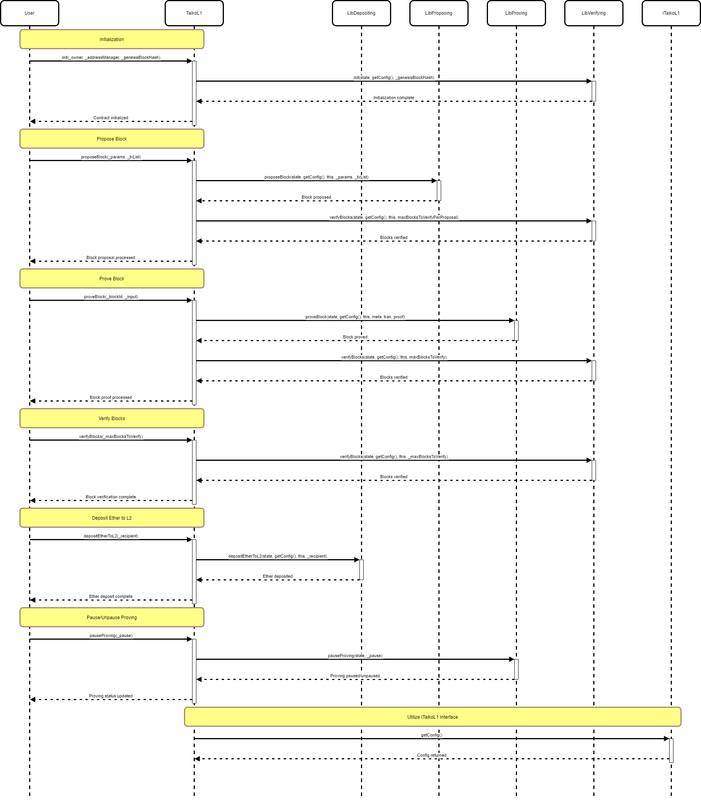
TaikoL2 Smart Contract Functionalities
Overview
The TaikoL2 contract is integral to managing cross-layer communications, including anchoring L1 block details to L2, managing EIP-1559 gas pricing, and ensuring the integrity of cross-layer message verification.
Initialization
- init: Sets up the contract with essential configurations like the owner, address manager, L1 chain ID, and initial gas excess values. It prepares the contract for its operations right from the genesis block or testing scenarios.
Block Anchoring
- anchor: Anchors the details of the latest L1 block to L2. This function is crucial for maintaining consistency and trustworthiness across layers, enabling cross-layer message verification and synchronization of block details.
Financial Transactions
- withdraw: Allows withdrawal of tokens or Ether, ensuring only authorized personnel or mechanisms can access and transfer assets held by the contract.
Gas Pricing Management
- getBasefee: Computes and returns the EIP-1559 base fee per gas for given parameters, adapting to network conditions and ensuring fair and efficient gas pricing.
- getConfig: Provides configuration details related to EIP-1559 gas pricing, such as gas targets per L1 block and the base fee adjustment quotient.
Utility Functions
- getBlockHash: Retrieves the hash of a given block number, facilitating verification and lookup operations that require historical block information.
- skipFeeCheck: A hook that allows bypassing base fee checks during simulations or testing, enhancing flexibility in different operating environments.
Internal Mechanics
- _calcPublicInputHash: Computes hashes for verifying the integrity of public inputs, an essential part of ensuring secure and tamper-proof operations.
- _calc1559BaseFee: Calculates the dynamic EIP-1559 base fee based on the network's current gas usage and predefined targets, adjusting the base fee to match network conditions.
Events
- Anchored: Emitted after successfully anchoring L1 block details to L2, providing transparency and traceability for cross-layer operations.
Error Handling
Various custom errors like L2_BASEFEE_MISMATCH, L2_INVALID_CHAIN_ID, and L2_PUBLIC_INPUT_HASH_MISMATCH ensure precise and informative feedback for operations that fail due to specific conditions not being met.
Summary
TaikoL2 plays a pivotal role in the Taiko ecosystem, facilitating critical functionalities like cross-layer message verification, dynamic gas pricing according to EIP-1559, and the secure anchoring of L1 block details to L2. Through a combination of financial transaction management, utility functions, and strict error handling, TaikoL2 ensures seamless operations and integrity across blockchain layers.
SignalService Smart Contract Functionalities
Initialization and Authorization
- init: Initializes the contract with the owner and address manager, setting up the contract for operation.
- authorize: Allows the owner to authorize or deauthorize addresses for calling
syncChainData, controlling which contracts can synchronize chain data.
Signal Operations
- sendSignal: Allows any address to send a signal, which is a generic mechanism for communication across the Taiko platform.
- syncChainData: Synchronizes chain data across different layers or components within the Taiko ecosystem, ensuring consistency and facilitating cross-layer communication.
Signal Verification and Management
- proveSignalReceived: Verifies that a signal has been received by checking against stored signals. This function is critical for multi-hop signal verification, where a signal passes through several chains or components.
- isChainDataSynced: Checks if chain data for a specific chain ID and kind has been synchronized to a given block ID, verifying the current state against expected values.
- isSignalSent: Determines if a signal has been sent by checking against the stored signals, providing a way to verify signal emission.
- getSyncedChainData: Retrieves the latest synchronized chain data for a given chain ID and kind, offering access to the most recent state for verification or further processing.
- signalForChainData: Generates a signal identifier for given chain data, facilitating the tracking and management of synchronized data.
Signal Slot Management
- getSignalSlot: Computes the storage slot for a signal based on chain ID, the initiating address, and the signal itself, ensuring organized storage and retrieval of signals.
Internal Mechanics
- _verifyHopProof: Internally verifies a hop in a multi-hop signal proof, checking the integrity and authenticity of the signal as it moves through different chains or layers.
- _syncChainData: Handles the internal synchronization of chain data upon successful verification, updating the state accordingly.
- _sendSignal: Internally handles the emission of signals, storing the signal in a designated slot and emitting an event for transparency and traceability.
- _cacheChainData: Caches chain data during multi-hop signal verification, optimizing the verification process by storing intermediate states.
- _loadSignalValue: Retrieves the value associated with a signal from storage, enabling the verification and processing of signals.
Error Handling and Restrictions
- Various errors such as SS_EMPTY_PROOF, SS_INVALID_SENDER, SS_INVALID_LAST_HOP_CHAINID, and others ensure robust error handling, providing clear feedback for incorrect or unauthorized operations.
- Modifiers like validSender and nonZeroValue enforce basic validation rules for function parameters, adding an additional layer of security and data integrity.
Summary
The SignalService contract is a foundational component of the Taiko platform, enabling secure and verified communication across different layers and components. Through a comprehensive set of functionalities for sending, synchronizing, verifying, and managing signals, it supports the complex interactions required in a multi-layered blockchain ecosystem.

Bridge Smart Contract Functionalities
Core Functionalities
Initialization
- init: Sets up the contract with an owner and an address manager, preparing it for operation.
Message Handling
- sendMessage: Allows users to send messages across chains. It ensures the message has valid sender and receiver information and the required value transfer.
- recallMessage: Enables the sender to recall a message before it's processed on the destination chain, under certain conditions.
- processMessage: Processes a received message, executing its intended action if it meets validation criteria.
- retryMessage: Attempts to re-process a message that has previously failed due to execution errors, under specific conditions.
Message Verification
- isMessageSent: Verifies if a message has been sent, utilizing the signal service for confirmation.
- proveMessageFailed: Confirms whether a message has failed on its destination chain.
- proveMessageReceived: Validates the receipt of a message on the destination chain.
Configuration and Management
- suspendMessages: Allows the suspension or resumption of message processing, useful in managing spam or incorrect messages.
- banAddress: Enables banning or unbanning of addresses from message invocation, providing control over who can participate.
- isDestChainEnabled: Checks if a particular destination chain is supported for messaging, ensuring only configured chains are used.
Invocation Delays
- getInvocationDelays: Determines the delay periods before a message can be executed, offering protection against rapid, potentially harmful actions.
Utility Functions
Context Management
- context: Retrieves the current message processing context, providing details like message hash and sender information for the ongoing operation.
Hashing and Signal Handling
- hashMessage: Creates a deterministic hash of a message, ensuring unique identification.
- signalForFailedMessage: Generates a unique signal for messages that have failed, facilitating error handling.
Execution and Status Updates
- _invokeMessageCall: Executes the action specified in a message, applying the appropriate gas limit and handling the execution result.
- _updateMessageStatus: Updates the processing status of a message, marking it as done, retriable, or failed based on execution outcomes.
Internal State Management
- _resetContext: Clears the current message processing context, ensuring clean state before and after message processing.
- _storeContext: Saves the current message processing context, capturing essential details for later use during message execution.
- _loadContext: Loads the message processing context from storage, providing access to previously stored details for ongoing operations.
- _proveSignalReceived: Internally verifies the receipt of a signal, confirming message transmission or execution status across chains.
Error Handling
- Various error codes (e.g.,
B_INVALID_CHAINID,B_INVALID_CONTEXT) provide specific feedback for failed operations, improving the robustness and reliability of message handling.
Summary
The Bridge contract serves as a pivotal element in the cross-chain messaging system, facilitating secure and verified communication across different blockchain networks. It incorporates mechanisms for message sending, recall, processing, and retrying, alongside robust verification, context management, and administrative functions to ensure efficient and secure cross-chain interactions.
BaseVault Smart Contract Functionalities
Overview
The BaseVault contract lays the foundation for creating vaults within the system. It integrates essential functions for interaction with bridge messages and supports interface identification.
Core Functionalities
Initialization
- init: Sets up the vault with an owner and an address manager. This is a critical step to ensure the vault is correctly integrated within the broader system infrastructure.
Interface Support
- supportsInterface: Determines if the contract implements a specific interface, facilitating interaction compatibility checks. Particularly, it confirms support for the
IRecallableSenderinterface, indicating the vault's ability to handle recalled messages.
Vault Identification
- name: Provides a unique identifier for the vault. This identifier is crucial for differentiating between multiple vaults and ensuring that messages and interactions are correctly routed.
Message Handling Validations
Context Validation
- checkProcessMessageContext: Validates the context for processing a message. It ensures that the message being processed is intended for this vault, based on the source chain's context.
- checkRecallMessageContext: Validates the context for recalling a message. It checks that the recall request originates from an authorized source, ensuring that only legitimate recalls are processed.
Modifiers
Access Control
- onlyFromBridge: Restricts certain operations to be callable only by the bridge contract. This modifier is a security measure, ensuring that sensitive actions, such as processing or recalling messages, are controlled and originate from trusted sources.
Error Handling
Permission Management
- VAULT_PERMISSION_DENIED: This error is triggered when an unauthorized action is attempted, such as processing a message not intended for this vault or recalling a message improperly. It serves as a safeguard against unauthorized or incorrect operations, maintaining the integrity of vault interactions.
Summary
The BaseVault contract is an abstract foundation for creating secure and functional vaults within the ecosystem. It ensures interface compatibility, enforces access controls, and provides mechanisms for message context validation, thereby supporting secure and efficient cross-chain interactions and message handling.
SgxVerifier Smart Contract Functionalities
Overview
SgxVerifier focuses on on-chain verification of SGX (Software Guard Extensions) signature proofs, utilizing SGX for enhancing security and trust within the system.
Key Components and Functionalities
Initialization and Instance Management
- init: Initializes the contract with an owner and an address manager. It's a foundational step for setting up the contract within the ecosystem.
- addInstances: Allows the addition of trusted SGX instances to the system, marking the beginning of their validity period. It supports the dynamic addition of SGX instances, enhancing the system's flexibility and security.
- deleteInstances: Facilitates the removal of SGX instances from the registry, ensuring the system can be updated or corrected as necessary.
- registerInstance: Registers a new SGX instance after successful attestation verification. This function bridges the gap between off-chain SGX attestation and on-chain recognition, critical for maintaining a trusted environment.
Proof Verification
- verifyProof: Core functionality that verifies SGX signature proofs against the system's records. It ensures that only valid and verified operations are executed, maintaining system integrity.
Utility Functions
- getSignedHash: Generates a signed hash for proof verification, serving as a critical component in the verification process. It ensures the integrity and authenticity of the data being verified.
- _addInstances (Private): Handles the backend process of adding SGX instances, encapsulating the logic necessary for updating the system's records.
- _replaceInstance (Private): Manages the replacement of SGX instance addresses, enabling the system to update instance details while maintaining continuity and security.
- _isInstanceValid (Private): Checks the validity of an SGX instance based on its registration details and expiry. It's a safeguard ensuring that only currently valid instances are considered in operations.
Data Structures and Error Handling
- Instance: A structure representing SGX instances, including address and validity start time. It organizes the essential information for SGX instances, facilitating management and verification.
- Errors: Defines several errors such as
SGX_ALREADY_ATTESTED,SGX_INVALID_ATTESTATION, and others, which are crucial for robust error handling and informing users of specific issues encountered during operations.
Events
- InstanceAdded: Emitted when a new SGX instance is registered, providing transparency and traceability of SGX instance management.
- InstanceDeleted: Signals the removal of an SGX instance from the system, ensuring stakeholders are informed of changes within the SGX environment.
Summary
SgxVerifier acts as a bridge between the trusted execution environment provided by SGX and the on-chain ecosystem, enabling enhanced security through verifiable computing. Through its functionalities, it supports dynamic management and verification of SGX instances, playing a crucial role in maintaining a trusted and secure environment within the system.
Centralization Risk
- Single Points of Failure: The reliance on specific addresses or entities for key functionalities (e.g., GOLDEN_TOUCH_ADDRESS in
TaikoL2or owner privileges across contracts) introduces centralization, which could lead to vulnerabilities if these accounts are compromised. - Administrative Controls: Several functions are guarded by onlyOwner or similar access controls, granting unilateral power to the contract owner to modify critical components of the system, such as pausing operations, adding or removing SGX instances, or adjusting system configurations.
- Signal Service Authorization: In
SignalService, the reliance on a centralized mechanism to authorize addresses for signal operations can lead to centralization risks, where manipulation or mismanagement could disrupt the integrity of cross-chain data flows.
Systematic Risk
- Cross-Contract Dependencies: The ecosystem's heavy reliance on interactions between contracts (e.g.,
BridgeandSignalService,TaikoL2anchoring to L1) creates a tightly coupled system where failures or bugs in one contract could have cascading effects, potentially leading to system-wide failures. - Chain Reliance and Interoperability: The functionality tied to specific chain IDs and the need for accurate syncing between L1 and L2 (or beyond) poses systematic risks. Discrepancies in chain data or failures in the anchoring process could lead to inaccurate state representations or security vulnerabilities.
Architecture Risks
- Upgradeability and Immutable Defects: Contracts employing upgradeable patterns or relying on external contracts for critical logic (e.g.,
ERC1967Proxy) are at risk if the upgrade mechanism is compromised or if there are undetected flaws in the initial implementation that cannot be rectified in a decentralized manner. - Inter-Contract Communication Complexity: The need for contracts to communicate and verify information across layers (L1, L2, etc.) introduces architectural complexity that could result in potential misalignments or inconsistencies, especially concerning state management and signal verification.
Complexity Risks
- Contract Interactions and State Management: The system's design involves complex interactions between contracts for state transitions, message passing, and verification processes. This complexity increases the risk of bugs or oversight in state management, potentially leading to vulnerabilities.
- Verification and Validation Mechanisms: The reliance on cryptographic proofs (e.g., SGX signature proofs in
SgxVerifier), and complex verification mechanisms like EIP-1559 gas pricing adjustments inTaikoL2, introduce risks related to the correct implementation and potential exploitation of these cryptographic and algorithmic methodologies. - Dynamic Configuration and Parameters: The system's dependence on dynamically set parameters (e.g., SGX instance validity, gas pricing configurations) introduces risks related to the management and updating of these parameters. Incorrect configurations could lead to operational inefficiencies or vulnerabilities.
Conclusion
The Taiko ecosystem presents a sophisticated architecture aimed at enhancing cross-layer communication and operational efficiency across blockchain layers. While it leverages advanced cryptographic techniques and dynamic configurations for scalability and security, it also introduces risks associated with centralization, systemic dependencies, architectural complexity, and operational management. Addressing these risks requires rigorous security measures, decentralized governance, and continuous monitoring to ensure the integrity and robustness of the system in a rapidly evolving blockchain landscape.
Time spent:
35 hours
#0 - c4-judge
2024-04-10T11:02:29Z
0xean marked the issue as grade-a
